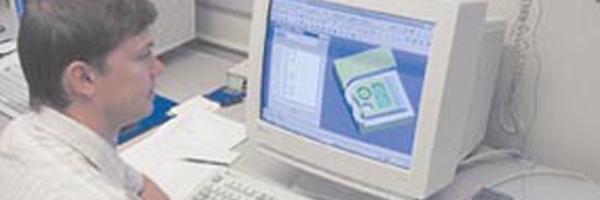Using Today’s Technology to Train Tomorrow’s Machinists & Programmers
With high-speed machine tools, increasingly sophisticated CAD/CAM software, advancements in cutting tools and materials, and powerful CNC controllers, the manufacturing industry is rapidly becoming more complex. At the same time, educational budgets are stretched as thin as ever. This leaves the educators responsible for preparing tomorrow’s NC programmers and machinists with a considerable challenge. Bates Technical College in Tacoma, WA (www.bates.ctc.edu) uses VERICUT to help better train students, control costs and make maximum use of the instructor’s time and resources.
Bates offers a two year technical degree in machining. The basic blocks of the curriculum include manual lathe and mill, grinding, algebra and trigonometry, blueprint reading, CNC lathe and mill, CAD/CAM, GD&T and SPC. About 90% of the students get CNC jobs in the Seattle/Olympia area.
The average class size is approximately 20 students, who range in age from 16-55 with differing skill levels. Some students come from manual machining shops wanting to upgrade their skills to CNC, while others are new to machining.
With the number of students and limited machining resources, instructor Bob Storrar decided to use VERICUT to help improve the quality of educational instruction he could provide. “Before we started using VERICUT, beginning CNC students wrote programs by hand, then manually entered them at the CNC control one line at a time. Programs were first ‘proved-out’ by machining in foam, then in aluminum. Students were competing for machine time to prove out their programs.” Mistakes were usually not found until running the program on the machine. Much of the instructor’s time was spent hovering over each student during prove-outs while other students waited to use the machine.
>Not only was it an inefficient use of instructor time, but running student-programmed parts on the CNC also entails a certain amount of risk. According to Storrar, “the occasional unplanned rapid moves would often result in machine crashes. It was a difficult situation to manage.”
All this changed with VERICUT. Now instead of proving out programs on the busy CNCs, students write them in word processing software, then use VERICUT to graphically proof them. “It’s helped a lot,” says Storrar. “Students can clearly see mistakes before they get to the machine, and they get immediate feedback on changes or corrections. Now I rarely see the potential crashes because the students find and correct them before I review the work. Catching those costly problems is a non-event now! Can you imagine how that reduces the stress level of an instructor?”
Due to its graphical nature, VERICUT enables students to more easily concentrate on what’s important rather than spinning their wheels while they don’t understand what the tool is doing. Many students are visual learners and learn best by seeing a process. Bates also has a number of foreign students who are new to English. “It used to be difficult to explain what was wrong with a program when we were only looking at code written on paper,” says Storrar.
VERICUT makes learning NC programming a less frustrating and more enjoyable experience. In the beginning, students often have difficulty visualizing where the tool is located with relation to the workpiece. They struggle as they are developing the skill of reading and interpreting code. “Many students get so confused with the math and code that they will loose sight of where they’re going,” says Storrar. “Frustration will mount to the point where it impairs their ability to learn.” With VERICUT, students immediately preview confusing portions of a program. The ability to address uncertainties almost instantly (usually without assistance) makes programming more enjoyable for student and instructor.
Storrar finds it much easier and faster to review student’s work using VERICUT. He has set up student files with the pre-designed stock sizes they commonly use for projects. Students import the stock file into the software then run their toolpath. Handwritten programs can be viewed more quickly in VERICUT as opposed to setting up and running a CNC machine. He has also started using VERICUT to inspect student work against a master. Figuring out a tool path with trigonometry is part of the exercise. “It’s interesting and beneficial to see how the students’ math compares to the master.”
And it’s not only the instructors that are saving time. Many students have full time jobs in addition to their studies. Any time saved by proving programs electronically is valuable. Alex Uzun emigrated from Ukraine three years ago and is working full time in the evening while finishing the machinist program. “VERICUT has helped me check my programs for cutter compensation and math errors before I send them to the CNC machine. Without it I would be spending more time at the machine to make sure my programs were correct.”
Additionally, the software has eased the burden on the school’s overworked CNC machines. Consequently, the machine availability time has increased by nearly 400%. Wear and tear on the machinery and tooling has been dramatically reduced which translates to considerable cost savings. Crashes are less frequent, and less material is wasted proving out programs. And of course, it’s much easier to keep the machine clean because it is cutting less foam and aluminum!
 Germany
Germany Italy
Italy USA
USA South Korea
South Korea UK
UK India
India France
France China
China Japan
Japan
